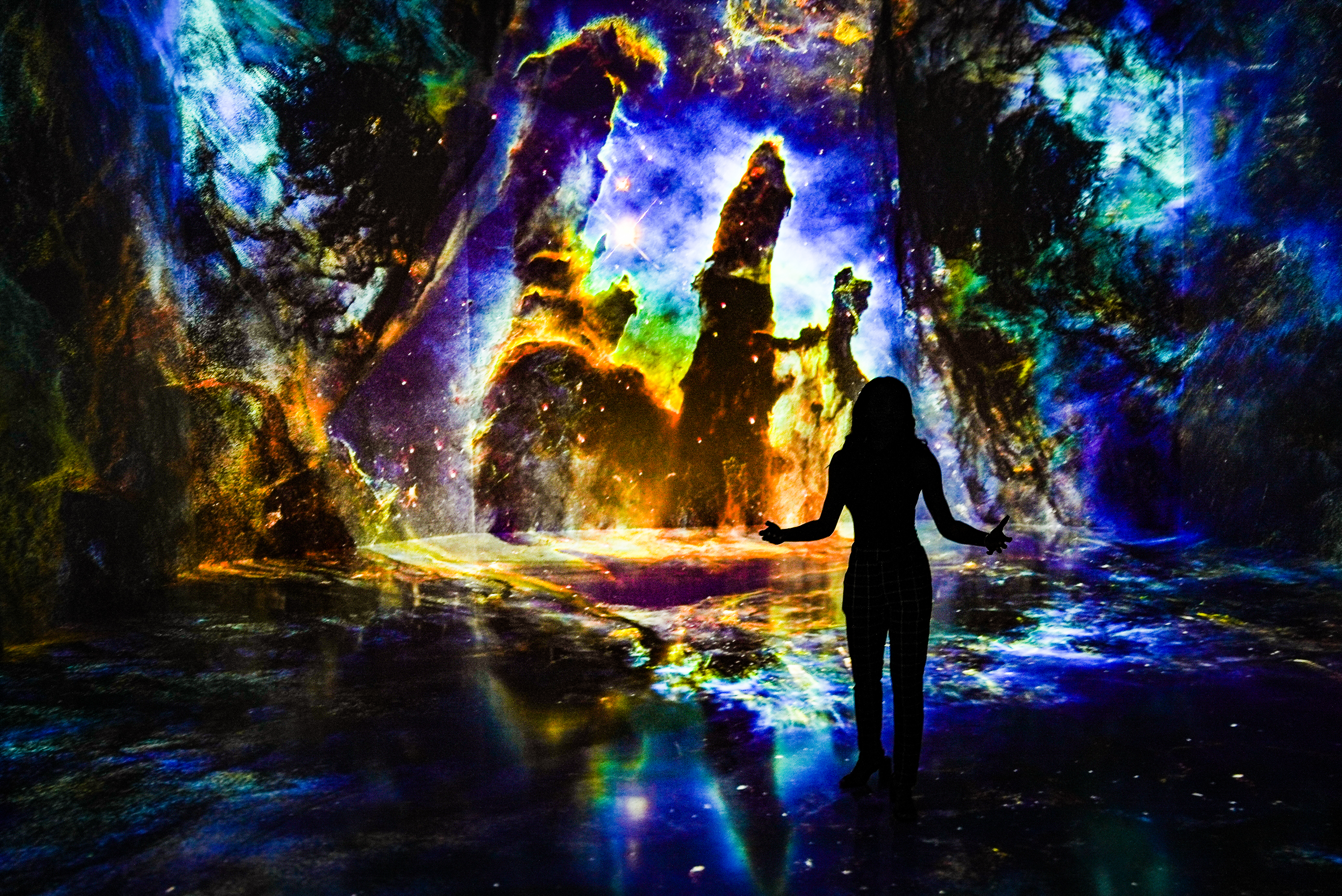
It's a rule of thumb -- or fin -- for the ocean: The deeper you dive, the weirder things get.
Now, a new exhibit lets visitors jump straight into the strangest layer of the ocean, bringing the creatures that live in the "twilight zone" to the surface of ARTECHOUSE'S walls.
"Twilight Zone: Hidden Wonders of the Ocean" was jointly created by ARTECHOUSE, the immersive-exhibit powerhouse of D.C., and the Woods Hole Oceanographic Institution (WHOI), and was named after the part of the ocean its creatures dwell in.
What is the ocean's twilight zone, and what lives there?
According to WHOI, the twilight zone refers to a specific depth within the water, not a latitude or longitude. Dive to the twilight zone -- around 650 feet to 3,300 feet below the surface -- and the cold waters and low levels of sunlight force life into odd shapes for survival.
Fish develop bioluminescence on their underbellies to blend in with the underside of the water's surface, camouflaging against potential predators below. Predatory fish grow large, spiny-toothed jaws, or glowing lures that dangle from their backs to draw in prey.
Still other inhabitants of the twilight zone move in and out of their strange home every day for food, in what ARTECHOUSE calls "the largest migration on the planet" in a press release for the exhibit.
"From microscopic microbes to gargantuan plankton, jellies, and fish, these creatures possess amazing adaptations for the extreme environment of the twilight zone," the release says.
The result of those adaptations is a "captivating cinematic audio-visual experience," ARTECHOUSE says, with the bonus effect of highlighting "rarely-seen sea life" and its "intricate connections to the planet's health."
How do deep-sea creatures affect Earth's climate?
The trillions of organisms that migrate back and forth from the twilight zone help lock carbon dioxide away deep in the ocean, playing an important role in the Earth's climate and ecosystem simply by existing.
As phytoplankton photosynthesizes on the surface layer of the ocean, it absorbs sunlight and carbon dioxide. When the phytoplankton is then eaten by other migrating ocean creatures, or simply dies and sinks into the depths, it traps that carbon dioxide deeper in the water.
There, "it can remain locked away for hundreds or even thousands of years—keeping heat-trapping carbon out of the atmosphere," WHOI says on its website.
The exhibit is made up of a 24-minute immersive experience, six interactive installations and six "XR" -- or "extended reality" -- activities. Some of the storytelling tools are visual and audio experiences, while others highlight the science of the ocean, its inhabitants, and the Earth's ecosystem.
"This fall, we are thrilled to partner with WHOI to once again transform science into art with this mesmerizing exhibition delving into the mysteries of the deep," said Sandro, the founder and chief creative officer of ARTECHOUSE, in the release.
Tips for visitors to "Twilight Zone: Hidden Wonders of the Ocean"
The exhibit opened to the general public on Sept. 14, and is expected to stay open through at least the beginning of November.
Ticket prices range from $17 to $35 dollars, and are free for children 3 years and under. See specific prices and discounts here.
ARTECHOUSE is open from 10 a.m. until 10 p.m., with the last session starting at 9 p.m. Sessions for the exhibit "are every 30 minutes and last for 60 minutes, according to the museum's website.
There are also exhibit-themed drinks at the XR Bar, which you can learn more about here.



